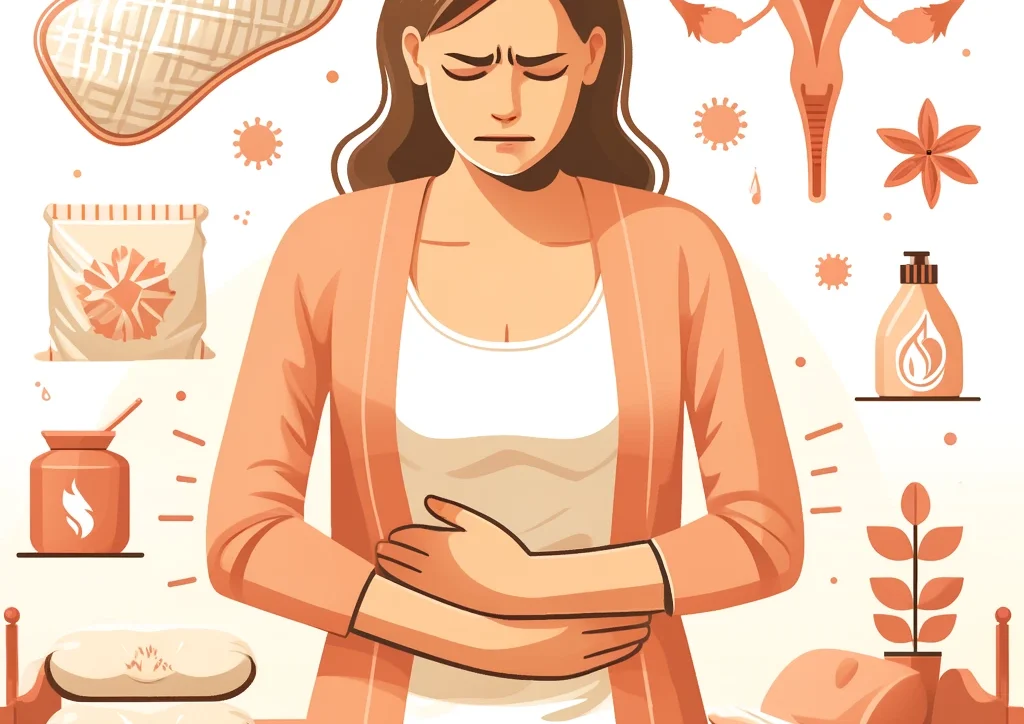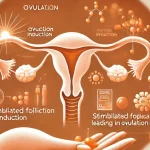We know that having a period is not always fun; For many women, dealing with dysmenorrhea — often referred to simply as “period pain” — is a recurring challenge. Whether it concerns cramps, back pain or fatigue, these discomforts can put a considerable strain on your daily life. That's why we've put together this guide packed with practical tips and advice to make your period a little easier. Sit back and discover how you can deal with dysmenorrhea in a natural and effective way. After all, you deserve nothing less than a comfortable and stress-free menstrual period!
What is dysmenorrhea and why does it hurt so much
Dysmenorrhea is the medical term for painful menstrual cramps. These cramps are caused by contractions of the uterus, which are necessary to shed the uterine lining. Sometimes these contractions are intense, which can lead to severe pain in the lower abdomen and sometimes even to the back and legs. The pain can range from mild to very severe and may be accompanied by symptoms such as nausea, fatigue and headache.
Several factors can contribute to the severity of dysmenorrhea. For example:
-
- Hormonal changes: Imbalance in prostaglandins, which regulate uterine contractions.
-
- Endometriosis: A condition in which the uterine lining grows outside the uterus.
-
- Myomas: Benign growths in the uterine wall.
| Factor | Description |
|---|---|
| Hormonal changes | Imbalance in prostaglandins |
| Endometriosis | Uterine lining outside the uterus |
| Myomas | Benign growths |
Diet changes that can help with menstrual pain
Surprisingly, changing your diet can make significant improvements in reducing menstrual pain. Following a nutritious, balanced diet can help regulate hormonal imbalance. For example, there is evidence that a diet rich in omega-3 fatty acids, such as those found in oily fish, nuts and seeds, can help reduce inflammation and therefore relieve pain. In addition, studies show that reducing sugar intake caffeine and alcohol can contribute to a more stable mood and fewer cramps. Try replacing these foods with fiber-rich vegetables, fruit and whole grain products for optimal effect.
In addition, consuming specific nutrients such as magnesium, vitamin B6 and calcium are very effective. Not only does this increase overall well-being, but it also offers specific benefits against menstrual pain. Consider adding dark leafy greens, bananas, and dairy to your diet. A breakdown of these nutrients and where to find them can be seen below:
| Nutrient | Power source |
|---|---|
| Magnesium | Spinach, Almonds, Avocado |
| Vitamin B6 | Bananas, Chicken, Potatoes |
| Calcium | Yogurt, Milk, Broccoli |
These small adjustments can make a big difference in reducing menstrual pain. By implementing a few simple changes to your daily diet, you can spend each month a lot more comfortably.
The power of heat: how a hot water bottle can help
Heat can be a miracle cure when it comes to relieving menstrual cramps. A simple hot water bottle can make a difference because the heat helps relax the muscles in the uterus, reducing pain. Menstrual cramps are often caused by the contractions of these muscles and heat helps improve blood circulation in the area, which helps reduce pain.
Using a hot water bottle can be helpful in several ways:
-
- Place it directly on your lower abdomen for immediate relief.
-
- Heat can also soothe your back pain if you press the bottle against your lower back.
-
- Trya warm shower as a supplement for extra comfort.
Here is a small overview for comparison:
| Method | Benefit |
|---|---|
| Hot water bottle | Instant heat and pain relief in specific areas. |
| Hot shower | Whole body relaxation and muscle relaxation. |
In addition, by regularly combining the use of heat with another aid such as relaxing breathing exercises, you can ensure consistent pain relief throughout your menstrual cycle. This can help you continue your daily activities without too much discomfort.
Exercises and yoga for relief from menstrual cramps
At Midwives Lelystad we believe that exercise activities such as exercises and yoga can make an impressive difference during your period. Yoga not only creates a state of calm, but it also helps reduce cramps and improve blood circulation. Consider regularly doing yoga with postures such as child's pose (Balasana), the cat-cow pose (Marjaryasana-Bitilasana) and downward dog (Adho Mukha Svanasana). These specific poses can work wonders due to the stretching effect on your abdominal muscles. Plus, they're easy to do, even when you're not feeling your best.
In addition to yoga, light exercises can also help to reduce tension and improve your overall mood. Try walking, light jogging, or even just doing simple stretching exercises. Here are some recommendations:
-
- Pelvic tilts – help loosen the lower back muscles and improve blood flow
-
- Squats - promote better blood circulation to the pelvic region
-
- Deep abdominal breathing – reduces stress levels and relaxes the body
| Yoga Posture | Benefit |
|---|---|
| Balasana (Child's Pose) | Calms nervous system |
| Marjaryasana-Bitilasana (Cat-Cow) | Relieves menstrual pain |
| Adho Mukha Svanasana (Downward Facing Dog) | Stretches the abdominal muscles |
The right painkillers: which ones work best and when to take them
For dysmenorrhea, there are various painkillers that can help you relieve the pain. Not every painkiller works equally well for everyone, so it can be a matter of trying out what suits you best. Consider the following options:
-
- Paracetamol: The most basic painkiller, effective for mild pain.
-
- Ibuprofen: Has an anti-inflammatory effect and is often more effective for menstrual cramps.
-
- Naproxen: A somewhat stronger anti-inflammatory, useful for severe cramps.
Another important aspect is when you take these painkillers. Ideally, you take a painkiller 20-30 minutes before the pain starts, especially if you have a regular menstrual pattern and can predict the pain. For acute pain it is useful to take a painkiller as soon as the first signs of cramps are noticeable. Here's a handy table to guide you:
| Painkiller | Taking time |
|---|---|
| Paracetamol | 4-6 hours between doses |
| Ibuprofen | 6-8 hours between doses |
| Naproxen | 8-12 hours between doses |
Resume
We hope that these tips can help you make the discomfort of dysmenorrhea a little more bearable. Remember that everyone is different and what works for one person may not be as effective for another. The most important thing is that you take good care of yourself and listen to your body. Do you have any questions or would you like personal advice? At Midwives Lelystad we are always ready to support you with expert advice and a listening ear. Please feel free to contact us; together we work on your well-being.
Until next time and take care of yourself!








